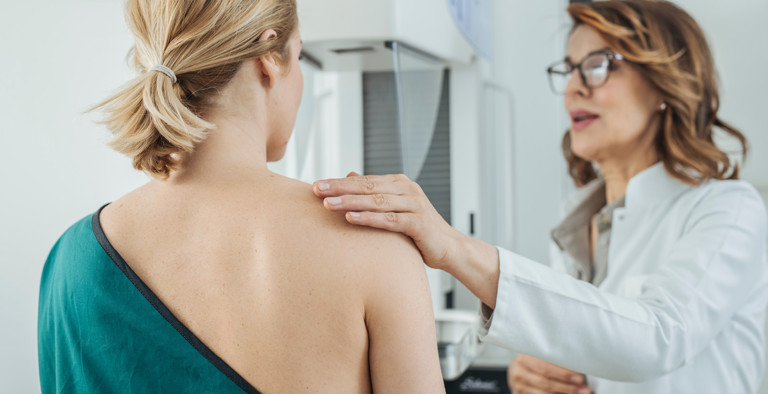South Dakota women have help to cover the cost of breast and cervical cancer screening. Mammograms, Pap smears, and related exams are available at no cost to eligible women at many doctors' offices, mammography units, family planning, and other health clinics.
The All Women Count! program serves women 30-64 years of age for Pap smears, 40-64 for mammograms, without insurance to pay for screening exams, and who have insurance but cannot pay the deductible or co-payment. Mammograms for women ages 30-39 require preauthorization through their healthcare provider. The program pays providers directly.
South Dakota Breast and Cervical Cancer Program Contact Form
All Women Count! Program Webinar | Dec. 3, 2024
The All Women Count! Program hosted an informational webinar on Tuesday, Dec. 3, 2024.

About Breast Cancer
Breast cancer is diagnosed when cells in the breast begin growing and reproducing more than they are meant to, creating tumors. These tumors can then spread from the breasts and progress to other parts of the body. There are many kinds of breast cancer depending on what cells in the breast become cancerous: the lobule glands that produce milk, the ducts that carry milk or the connective tissue made of fibrous and fatty tissue that holds the breast shape and keeps everything in place.
Breast cancer is the 4th leading cause of cancer deaths in South Dakota women.
About Cervical Cancer
Cervical cancer is diagnosed by an uncontrollable growth of cells that begins in the cervix, a part of the reproductive system that connects the vagina to the uterus. While anyone with a cervix can contract cervical cancer, it occurs most in people over 30. The most common cause of cervical cancer is human papillomavirus (HPV), a sexually-transmitted infection.
An estimated 1/3 of South Dakota women who are diagnosed with cervical cancer die because of it.
Prevention Tips
Help reduce your risk for breast cancer or cervical cancer with these tips from the CDC. Also consider the risks you can’t control.
Reduce Breast Cancer Risk By:
- Maintaining a healthy weight
- Being physically active
- Limiting alcohol use
- Asking your doctor about possible risks of hormone therapy and oral birth control
- Breastfeeding your children when possible
- Talking to your doctor about your family history and possible genetic risks
Learn more from the CDC.
Reduce Cervical Cancer Risk By:
- Getting the human papillomavirus (HPV) vaccine
- Getting screened at the doctor with a pap smear and HPV test
- Avoiding tobacco
- Using condoms during sex
Learn more from the CDC.
Detecting signs of cancer early could save your life!
Breast Exams
Another way to be on the lookout for breast cancer is through breast exams — either at home or at the clinic.
No one knows your breast tissue like you do. Knowing how they look and feel normally can help you recognize when abnormal lumps, pain, and size changes arise.
When you go in for a breast exam at a clinic, a doctor or nurse will use their hands and fingers to conduct the exam, searching for any lumps or pain that appears to be abnormal tissue.

